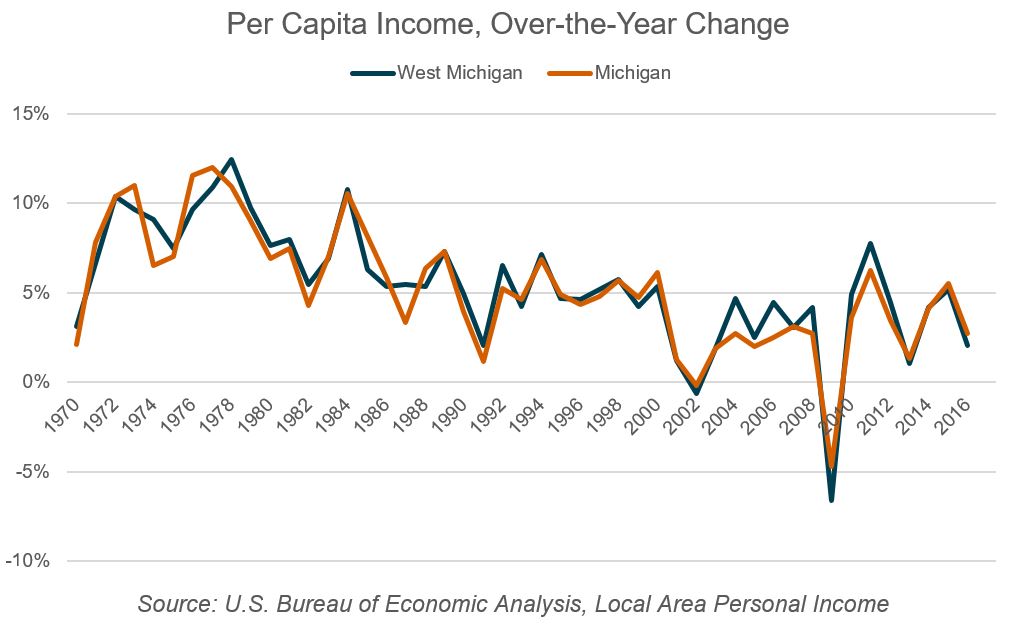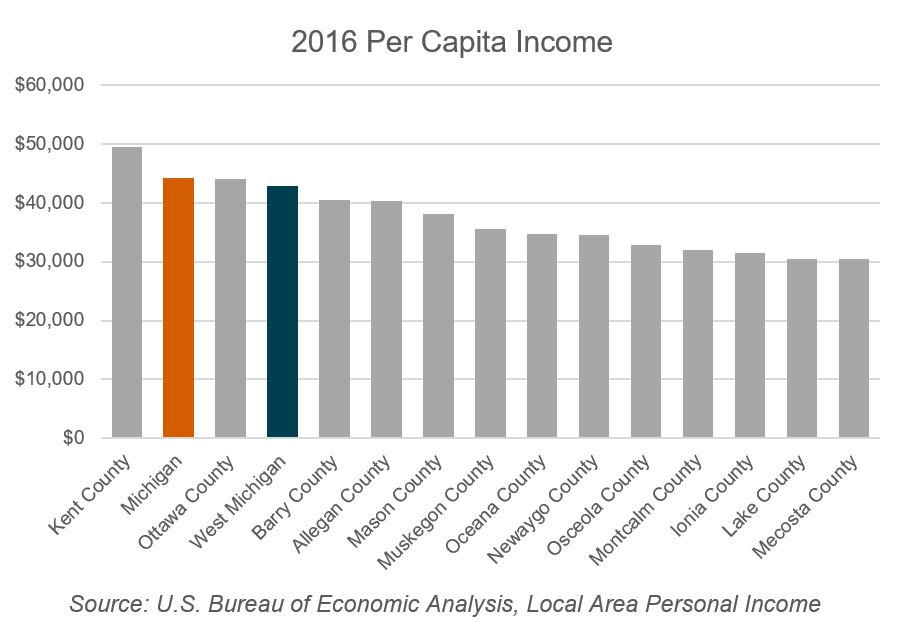Each year, the U.S. Bureau of Economic Analysis released income data on various geography levels. Most recently, sub-state data for income and per capita income was made available. While we’ve updated the “Per Capita Income” indicator on the Talent 2025 Regional Dashboard, we wanted to dig into this important measure and what it can tell us about West Michigan.
What is counted as “income?”
First, let’s establish what we’re talking about. Per the Bureau of Economic Analysis website, personal income is defined as:
“income received by, or on behalf of, all persons from all sources: from participation as laborers in production, from owning a home or business, from the ownership of financial assets, and from government and business in the form of transfers. It includes income from domestic sources as well as the rest of world. It does not include realized or unrealized capital gains or losses.”
This means that this measure is more inclusive than just wages, which are paid from an employer to employees.
What was per capita income in West Michigan in 2016?
In 2016, the West Michigan per capita income level was $42,797. This was an increase of $875 from 2015, an increase of 2.1 percent. This was also the highest level for per capita income recorded in the region (however, this does not account for inflation.) This level is the result of $67,660,819 in income being divided by the 2016 population estimate of 1,580,955 for the region. Regional per capita income in 2016 in West Michigan trailed the state, which had a per capita income of $44,253.

Within the West Michigan region, the two largest counties, Kent and Ottawa, saw the highest per capita incomes in 2016 at $49,599 and $44,035 respectively. The other 11 counties in West Michigan all trail the regional average; however, 12 of the region’s 13 counties saw an increase in per capita income from 2015 to 2016.

Why is this important?
Given that it includes more than wages paid, per capita income can provide a more complete picture of the resources available to those who live in a particular area. It can also be an indicator of the strength of a local economy and how it has fared over the past year.
It is important to note, however, that per capita income is essentially an average or a mean (since total personal income is divided by the population.) Because of this as opposed to, say, median income, per capita income can be skewed by particularly high earners or those bringing in a large proportion of the total income relative to all members of the population. In this way, it doesn’t reflect possible income inequality.


